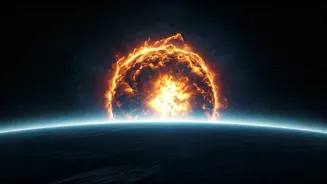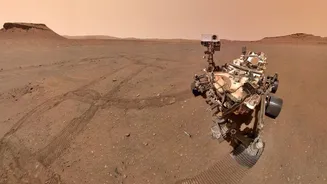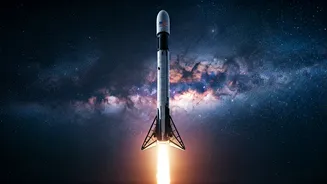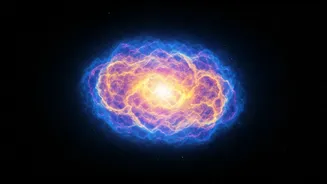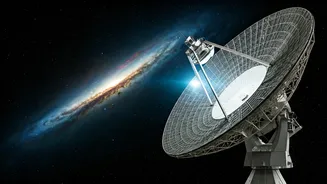A Cosmic Canvas
NASA's latest collection of images presents a mesmerizing panorama of the cosmos. These aren't just snapshots; they are meticulously captured representations
of celestial phenomena. They include detailed shots of planets, capturing the swirling atmospheres and distinctive features of each world. Nebulae, those vast clouds of gas and dust where stars are born, are depicted in vibrant colors, showcasing the dynamic processes of star formation. Further out, distant galaxies appear as stunning spirals and elliptical shapes, offering a sense of the sheer scale of the universe. Each image is a testament to the advanced technology and scientific expertise used to explore and understand the cosmos. The images are a result of complex data processing, combining observations from various space telescopes, resulting in views that were previously unimaginable. This is an invitation to explore the universe from a new perspective.
Planets in Detail
The images provide a close-up look at the planets in our solar system. The visuals reveal the distinct characteristics of each planet. Detailed images of Mars showcase its rust-colored surface, evidence of ancient riverbeds and geological formations. Jupiter's iconic Great Red Spot, a massive storm that has raged for centuries, is clearly visible, along with its swirling bands of clouds. Saturn's rings, composed of ice particles and debris, are rendered with exquisite detail. Even the distant ice giants, Uranus and Neptune, get their moment in the spotlight, with their unique atmospheric features and color variations. The images are not merely artistic representations; they also provide scientists with invaluable data, allowing them to study planetary atmospheres, surface compositions, and geological processes. Every picture contributes to an expanded understanding of our place in the solar system.
Nebulae's Celestial Wonders
The collection includes breathtaking views of nebulae, the stellar nurseries where stars are born. These nebulae are massive clouds of gas and dust, illuminated by the light of newborn stars, showcasing brilliant colors that are the result of elements like hydrogen, oxygen, and sulfur, which each produce unique color emissions. The images reveal the intricate structures within these nebulae, with swirling patterns of gas and dust carved by stellar winds and radiation. These images help scientists to study the process of star formation, showing them how gas and dust collapse under gravity to form new stars. The images reveal the dynamic, ever-changing nature of the universe. The pictures show how nebulae change over time, helping astronomers to track the life cycles of stars. These images highlight the birth and death of stars, and also reveal the complex interaction between stars and the surrounding interstellar medium.
Galaxies Far Beyond
Beyond our solar system and the nebulae, the images offer stunning views of distant galaxies. These galaxies are vast collections of stars, gas, dust, and dark matter, held together by gravity. The images show a range of galactic structures, from the majestic spiral arms of spiral galaxies to the more elliptical shapes of galaxies. The visuals depict the presence of supermassive black holes at the centers of many galaxies. The data allows scientists to study the formation and evolution of galaxies. This information helps us to understand the scale of the universe. Some images show the collisions between galaxies, showcasing the violent and dynamic processes that shape the cosmos. They highlight the incredible distances and the vastness of the universe, reminding us of the cosmic processes that have shaped everything we see.
Inspiring Wonder
The images are meant to provide inspiration. They highlight the beauty and complexity of the universe, and stimulate curiosity and exploration. These visuals go beyond scientific observation, becoming a source of artistic and aesthetic appreciation. The images are often shared widely, reaching audiences around the world, igniting conversations about space exploration, the potential for life beyond Earth, and our place in the cosmos. Through the sharing of these images, NASA contributes to broader discussions on the role of scientific exploration in inspiring and educating the public. The images provide a window to the universe, inspiring a sense of wonder and fostering a greater appreciation for the mysteries of space.



